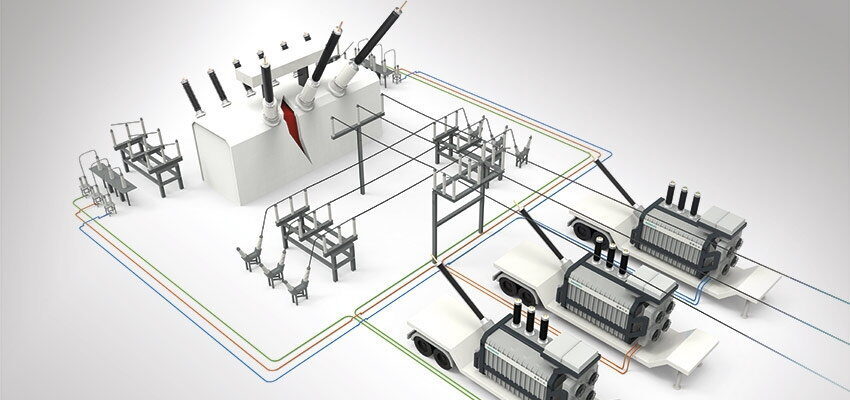
How to bypass a transformer
Abstract Availability is what the modern energy industry is all about. Private consumers in most economies expect and need an energy availability of 99.98 percent...
bySIEMENS

Abstract
Availability is what the modern energy industry is all about. Private consumers in most economies expect and need an energy availability of 99.98 percent – commercial consumers even more. In most of these countries the transmission grids were built to be redundant. However, ageing infrastructure and the ever growing energy demand in combination with extreme weather conditions push the existing redundancies to their limits. The transformer is a crucial asset within the grid: outages, whether planned or unplanned, are a nightmare for transformer operators. Mobile resilience units by Siemens Transformers offer an economic and flexible alternative to mitigate risks of a weakened grid – for all kinds of outages – not only in case of an emergency, but also and especially in case of planned downtimes as well.
Utilities worldwide face a wide range of challenges: the need for massive amounts of power is unbroken; power grids need to be extended and at the same time renewed and maintained. Bidirectional power flows e.g. from renewable energies bring new uncertainties and threats to the stability and reliability of the networks. This means a comprehensive, extensive and at the same time elaborated and sophisticated approach must be taken to secure existing grids and to make them fit for the future at the same time.
This is the moment for grid operators to reassess their strategy when it comes to transformers. The transformer plays a key role in the grid and is located at critical nodes within the network and thus is of main interest in this regard. For decades, the standard approach for availability was the establishment of redundancies (see textbox) or by owning a spare unit beside the operating transformers. With ageing assets, evermore powerful transformers and the availability of energy becoming a basic need for the people, a redundancy strategy that worked for years and years might no longer be state of the art.
Siemens mobile resilience transformers offer a redundancy opportunity for power generation facilities and transmission grid operators as well as industrial companies that are operating own network transformers. Their transport is stress-free because of their compact dimensions and weight. They can be installed within days instead of weeks or even months because their plug and play bushings and connections allow for flexible and easy commissioning. As they are designed in a versatile manner, they can replace a variety of transformers that operate at different voltage levels.
Reasons for planned outages – and the remedy
The well-known “bathtub-curve” (Figure 1) shows typical outage rates over the operational lifetime of a transformer. In the early years, the likelihood of an outage is increased due to possible “teething problems” of a transformer. Then, for 20-25 years, there are only random failures, while after more than 30 years, wear and tear cause decay and failures become more likely. Siemens Transformer Lifecycle Management offers a wide range of services for condition monitoring, refurbishment and repair measures to support transformer operators in making the most of a transformer lifetime. However, even planned outages up to now were risky times for a transformer operator – meaning that his redundancy is already in use and another one might not be covered as easily.







